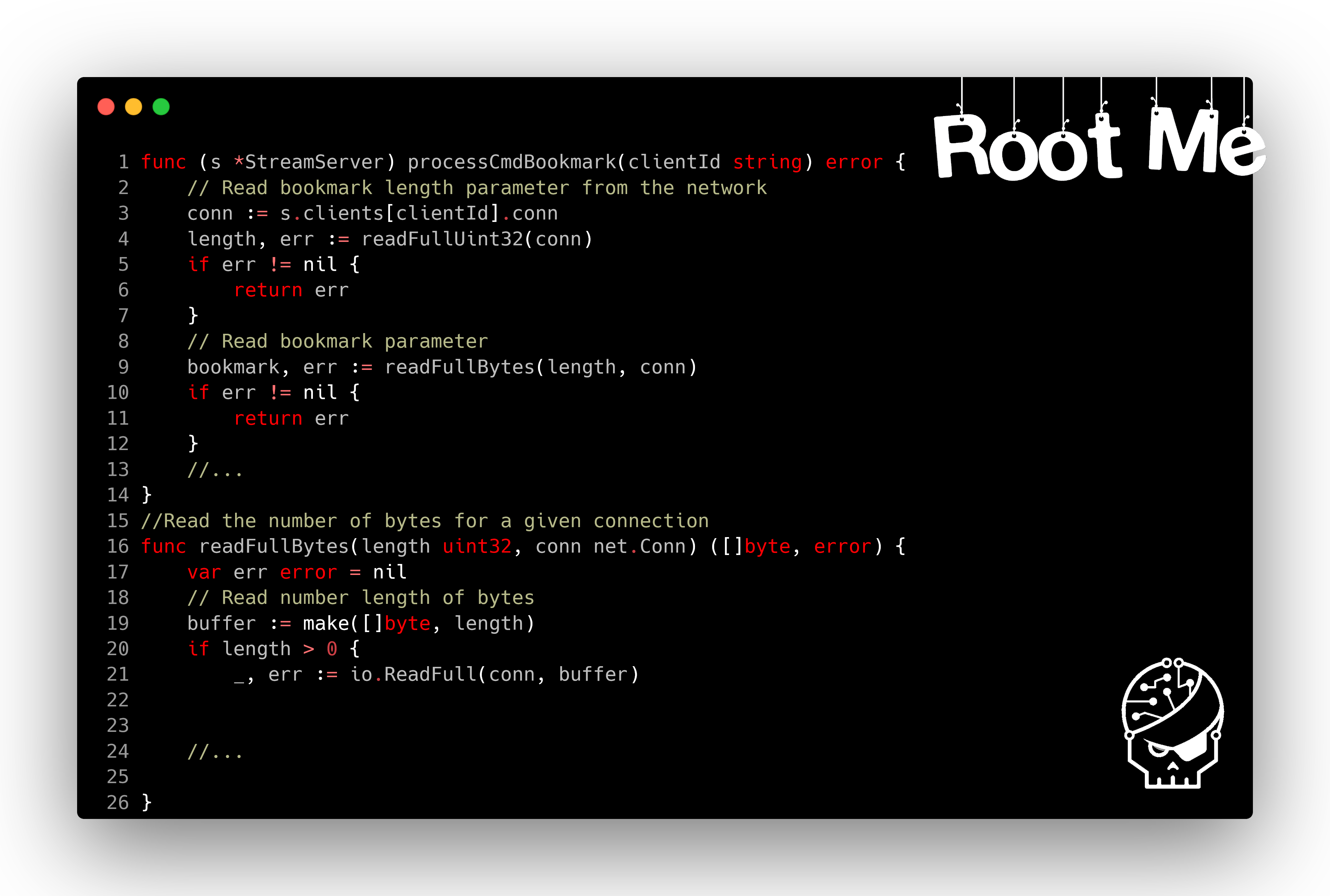Code Snippet Serie - 02 - Memory Exhaustion via Unchecked Input Length
Challenge Description

This challenge, authored by @Ethnical and @fadam, involves exploiting a vulnerability in a blockchain network server that processes incoming network messages. The vulnerability allows an attacker to cause a Denial of Service (DoS) by exhausting the server’s memory.
Vulnerability Overview
🛑 Vulnerability: The vulnerability lies in the unchecked allocation of memory based on user-controlled input length, leading to potential memory exhaustion.
Technical Analysis
Vulnerability Details
-
Unchecked Length Parameter:
- The
lengthparameter is read from the network without any validation. - This parameter directly influences the size of the buffer allocated in
readFullBytes.
- The
-
Memory Allocation:
- The function
make([]byte, length)allocates a buffer of sizelength. - If
lengthis excessively large, this can lead to significant memory allocation, potentially exhausting the server’s memory.
- The function
Exploitation Process
-
Crafting a Malicious Input:
- An attacker can send a message with a very large
lengthparameter. - For example, setting
lengthto0xFFFFFFFF(maximum value for a 32-bit unsigned integer).
- An attacker can send a message with a very large
-
Sending the Malicious Input:
- The crafted message is sent to the server.
- The server attempts to allocate a buffer of size
0xFFFFFFFFbytes.
-
Resulting Denial of Service:
- The server’s memory is exhausted, causing it to crash or become unresponsive.
- This disrupts the blockchain network, affecting all nodes that receive the malicious message.
Mitigation
🔒 To mitigate this vulnerability, the following measures can be taken:
-
Validate the
lengthparameter before using it to allocate memory. -
Set a maximum allowable length to prevent excessively large allocations.
const maxLength = 1024 * 1024 // 1MB func (s *StreamServer) processCmdBookmark(clientId string) error { // Read bookmark length parameter from the network conn := s.clients[clientId].conn length, err := readFullUint32(conn) if err != nil { return err } if length > maxLength { return fmt.Errorf("length exceeds maximum allowed size") } // Read bookmark parameter bookmark, err := readFullBytes(length, conn) if err != nil { return err } //... }
Conclusion
🔑 Understanding the memory exhaustion vulnerability and its exploitation process is crucial for developers to protect their applications. By prioritizing security measures, including input validation and memory allocation checks, the risks associated with memory exhaustion vulnerabilities can be effectively mitigated.
 Root-Me Blog
Root-Me Blog